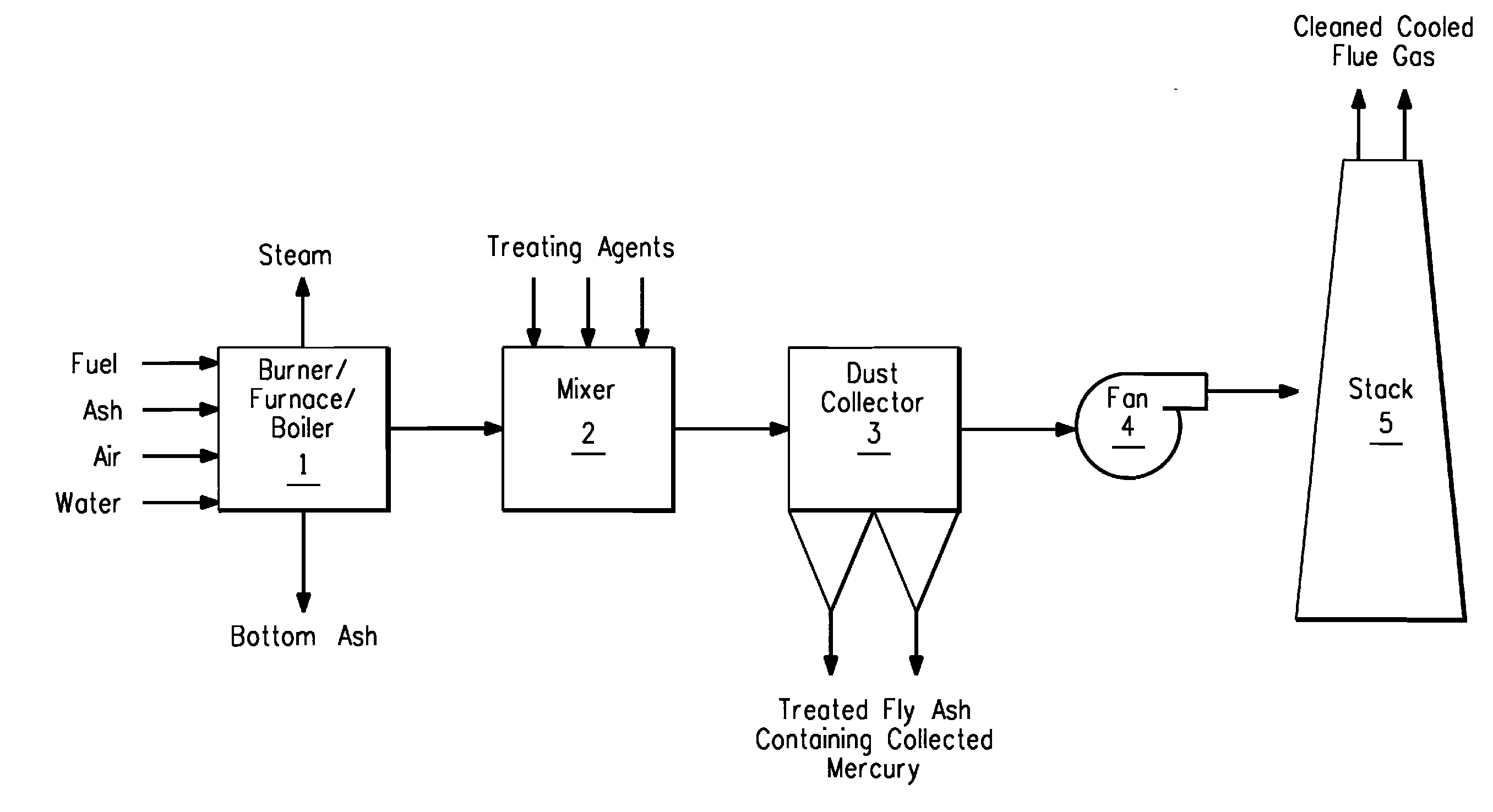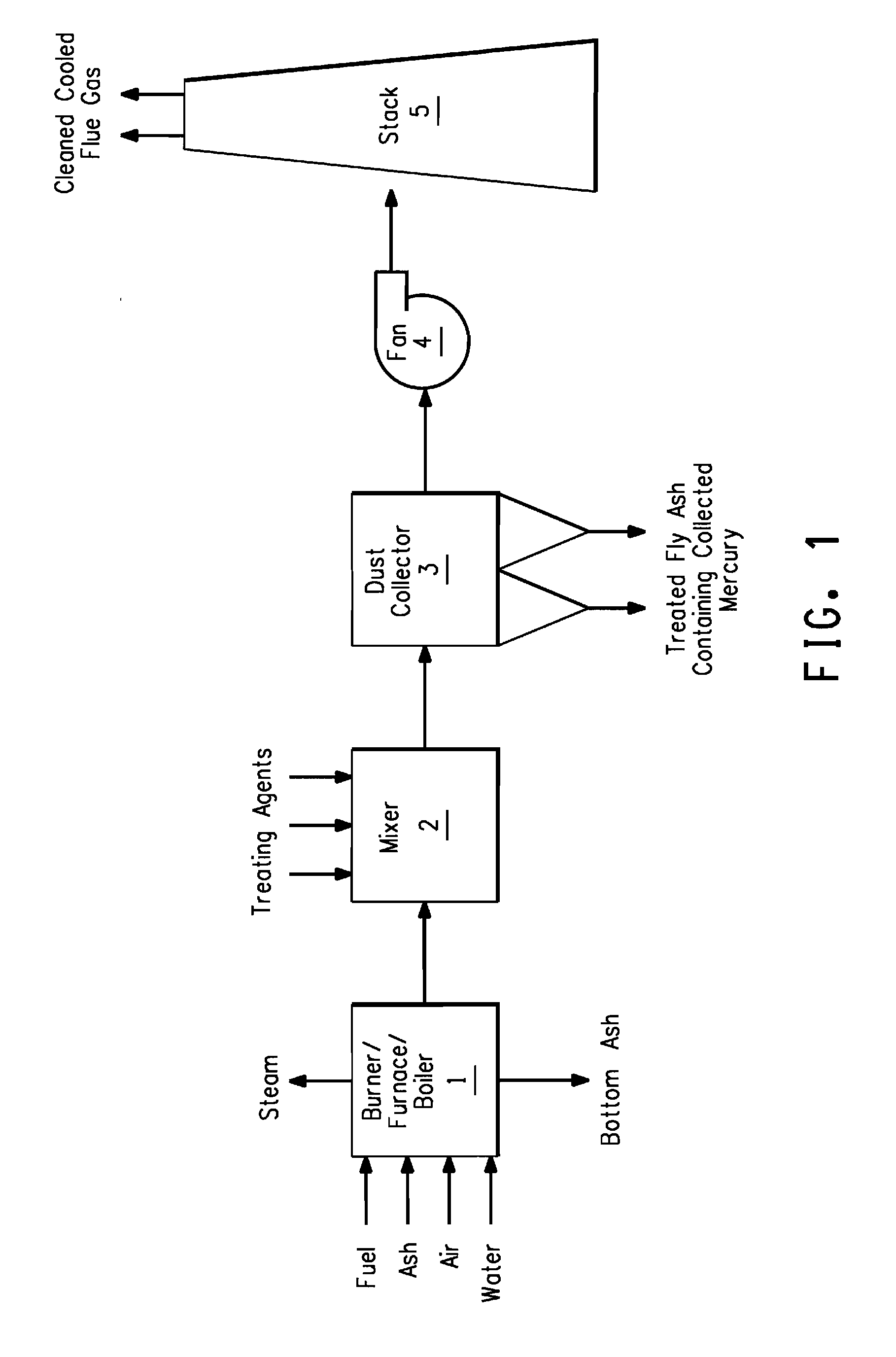Mercury removal from a gas stream
a technology of mercury removal and gas stream, which is applied in the direction of sustainable waste treatment, other chemical processes, separation processes, etc., can solve the problems of mercury contamination vegetation and fish consumption by animals and humans, increased regulations, and transformation into other forms, and achieves low leachability of mercury and low carbon content.
- Summary
- Abstract
- Description
- Claims
- Application Information
AI Technical Summary
Benefits of technology
Problems solved by technology
Method used
Image
Examples
example 1
[0052]The process of Comparative Example A is repeated with mercury control. Boric acid and TYZOR TBT organic titanate (available from E. I. du Pont de Nemours and Company, Wilmington, Del.) are dissolved in methanol and burned along with process solvents in the secondary burner. Clean low-sulfur coal flyash is added to a mixer to build a pre-coat about 1 mm thick on a fabric filter. The decontamination furnace is a one-day-cycle batch process, thus, it is not necessary to feed flyash except as a precoat at the beginning of each operating day. Residual boric acid in the collected flyash prevents leaching or volatilization of mercury.
example 2
[0054]The process of Comparative Example B is repeated with mercury control. Since there is plenty of flyash of slightly alkaline quality, it is only necessary to provide a scavenging coat of boric acid. This is done by adding boric acid to the evaporative cooling water at a ratio of at least 6 moles boron per mole of mercury. This results in more than 90% mercury containment without significant effect on fabric filter pressure drop. Mercury leachability is less than 0.025 mg / L as per RCRA TCLP (toxic characteristic leachate procedure) on the filtered solids.
example 3
[0056]The process of Comparative Example C is repeated with mercury control. Since there is a reasonable amount of flyash of slightly alkaline character and chlorine present from the coal, it is only necessary to provide a scavenging coat of boric acid. That is done by aspirating a strong aqueous solution of boric acid with a steam-jet venturi, then distributing the dilute boric acid vapor in steam through a grid arranged in the ductwork so as to provide good mixing with the main flue gas stream for about 3 seconds prior to entering the fabric filters. This results in more than 90% mercury containment relative to Comparative Example C without significant effect on fabric filter pressure drop.
PUM
| Property | Measurement | Unit |
|---|---|---|
| temperatures | aaaaa | aaaaa |
| pressure | aaaaa | aaaaa |
| temperature | aaaaa | aaaaa |
Abstract
Description
Claims
Application Information
 Login to View More
Login to View More - R&D
- Intellectual Property
- Life Sciences
- Materials
- Tech Scout
- Unparalleled Data Quality
- Higher Quality Content
- 60% Fewer Hallucinations
Browse by: Latest US Patents, China's latest patents, Technical Efficacy Thesaurus, Application Domain, Technology Topic, Popular Technical Reports.
© 2025 PatSnap. All rights reserved.Legal|Privacy policy|Modern Slavery Act Transparency Statement|Sitemap|About US| Contact US: help@patsnap.com


